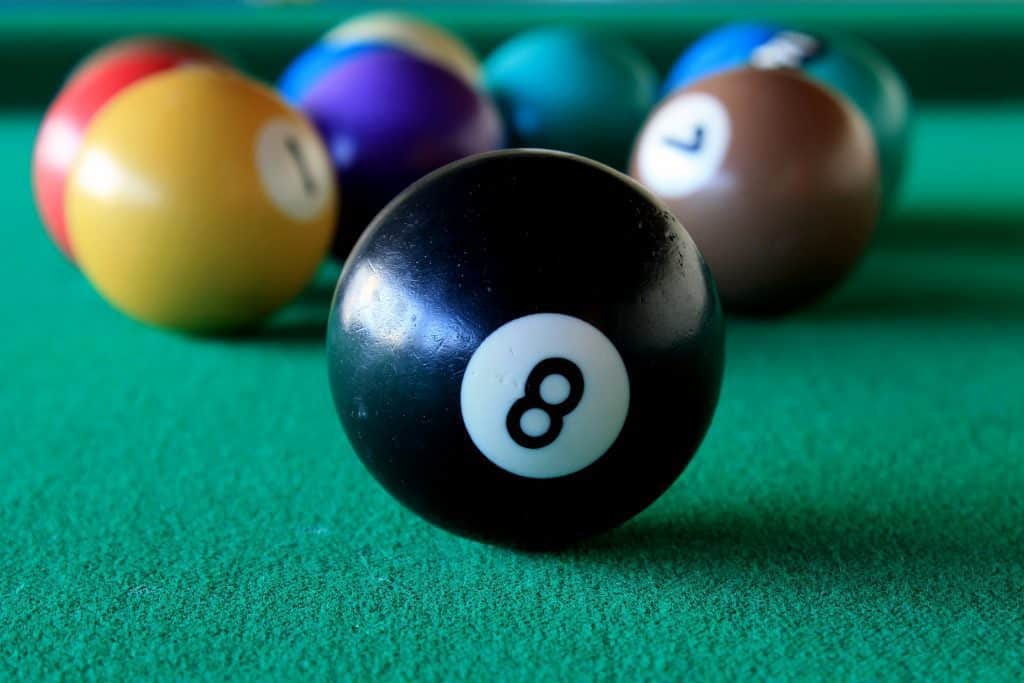
Unraveling the Difference Between 8-Ball and 9-Ball Pool
Billiards is a classic game that has stood the test of time, captivating players with its precision, strategy, and a touch of finesse. Within the realm of billiards, two popular variations have gained widespread recognition: 8-ball and 9-ball pool. While both games share the same fundamental objective – potting the balls to win – they diverge in rules, strategies, and even the psychology behind each shot. In this comprehensive guide, we’ll explore the nuanced disparities between 8-ball and 9-ball pool, helping you grasp the intricacies that make each game a unique experience.
Understanding the Basics
8-Ball Pool
Objective: In 8-ball pool, the primary objective is straightforward – players aim to pocket all their designated balls (either stripes or solids) and finally sink the 8-ball to claim victory. The player or team that legally pots the 8-ball after clearing their assigned set of balls is declared the winner.
Opening Break: The game kicks off with a break shot, where the cue ball is struck to scatter the balls across the table. Ideally, a player aims to pocket a ball during the break, which determines their set – either stripes or solids.
Fouls: Common fouls include pocketing the cue ball, failing to hit any balls during a shot, or hitting the opponent’s designated balls without first hitting one’s own. Players can also lose if they pot the 8-ball prematurely or commit specific fouls during play.
9-Ball Pool
Objective: 9-ball pool shifts the focus to the numerical sequence of the balls. Players aim to pocket the balls in numerical order, from 1 to 9. The player who pots the 9-ball legally wins the game, regardless of the number of balls they’ve pocketed before.
Opening Break: Similar to 8-ball, 9-ball starts with a break shot. However, the rules dictate that the 1-ball must be struck first, and players aim to legally pocket the 9-ball at any point in the game.
Fouls: Fouls in 9-ball include not hitting the lowest-numbered ball first during a shot, failing to make contact with any ball, or potting the 9-ball out of sequence. Common pool fouls, such as pocketing the cue ball or not hitting a rail after contact, also apply.
Strategic Nuances
8-Ball Strategy
- Ball Selection: Choosing between stripes and solids is a strategic decision that can significantly impact the game. Some players prefer to select the set with the most accessible initial shots, while others may opt for the set that provides strategic advantages later in the game.
- Controlling the Table: Successful players in 8-ball often focus on controlling the table, meaning they strategically position their balls to make subsequent shots more manageable. This involves thinking multiple moves ahead and considering defensive plays to limit the opponent’s options.
- Timing the 8-Ball Shot: Knowing when to go for the 8-ball is crucial. A premature attempt can result in a loss, so players often bide their time, setting up the ideal conditions to pocket the final ball and claim victory.
9-Ball Strategy
- Reading the Table: In 9-ball, players need to read the layout of the balls and plan their shots accordingly. Since the objective is to pot the balls in numerical order, strategic planning involves considering how each shot will set up the next in the sequence.
- Safety Play: Given the sequential nature of 9-ball, players often use safety plays strategically. This involves intentionally leaving the opponent with a challenging shot or poor position, increasing the likelihood of a foul or a missed shot.
- Targeting the 9-Ball: Skilled 9-ball players are adept at positioning the cue ball for a favorable shot on the 9-ball. This involves considering the layout of the remaining balls and planning the path to ensure a clear shot on the final ball.
Psychological Aspects
8-Ball Psychology
- Mind Games: The dynamic nature of 8-ball, with multiple balls on the table, introduces an element of psychological warfare. Players may try to predict their opponent’s strategy and adjust their own approach accordingly.
- Pressure Points: The pressure in 8-ball often peaks when it comes time to pocket the 8-ball. Players must maintain composure and precision, especially if the game is close. Navigating the endgame with a cool head is a hallmark of a skilled 8-ball player.
9-Ball Psychology
- Sequential Pressure: The numerical order in 9-ball introduces a unique psychological challenge. Players must handle the pressure of potting balls in sequence, knowing that a single mistake can reset the sequence and potentially hand the advantage to the opponent.
- Endgame Intensity: Similar to 8-ball, the intensity of 9-ball peaks during the endgame when players aim for the decisive shot on the 9-ball. Maintaining focus and nerve control in these critical moments can be the key to victory.
How to win at 8-ball: https://billiardsguru.com/how-to-win-at-8-ball/
Most effective 9-ball break: https://billiardsguru.com/most-effective-9-ball-break/
Supplies to get the job done: https://www.diamondbilliards.com/
Conclusion
In conclusion, while both 8-ball and 9-ball pool share the overarching goal of pocketing balls to win, the nuances in rules, strategies, and psychological dynamics set them apart as distinct experiences. Whether you prefer the strategic depth of 8-ball or the sequential challenge of 9-ball, both games offer unique opportunities for skill development, tactical prowess, and the thrill of competition. As you dive into the world of billiards, consider these differences to enhance your understanding and enjoyment of these timeless games. Now, armed with this knowledge, it’s time to rack ’em up and let the games begin!
Discover more from Billiards and Pool
Subscribe to get the latest posts sent to your email.